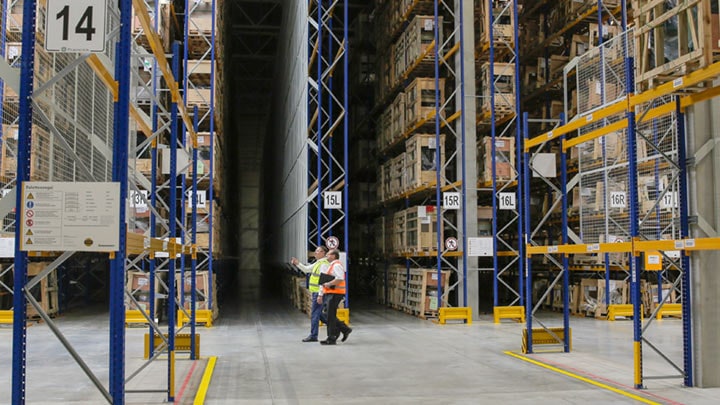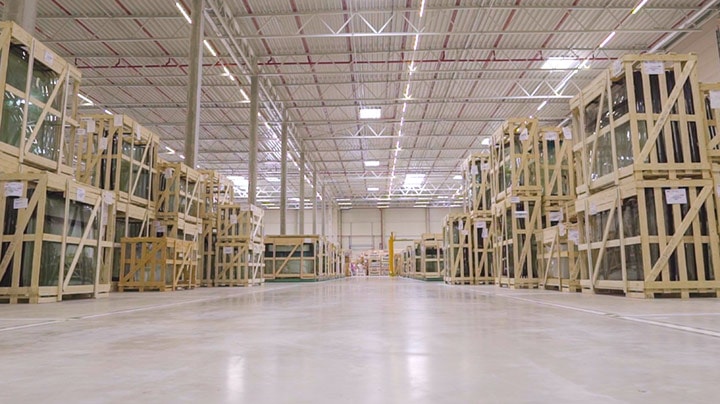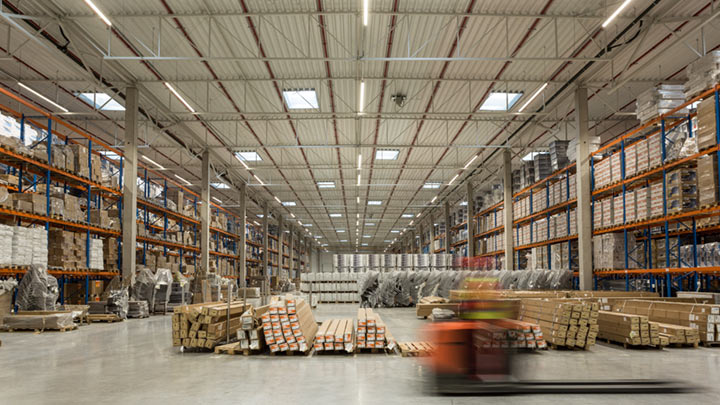
As we continue to grapple with the effects of global climate change, it’s up to businesses to make sustainability a priority. Good intentions are no longer enough. But pivoting towards “green” practices doesn’t have to be difficult especially when it comes to your warehouse(s). Start with swapping out one of your most basic infrastructure elements – lighting.
In non-refrigerated U.S. warehouses, lighting accounts for 36% of electricity use. Replacing traditional light sources with LED and connected lighting systems contributes to a brighter, environmentally responsible future. These solutions can help warehouses not just increase energy savings and reduce carbon emissions, too – they can even unleash data-driven insights and value for a more informed, secure and productive facility.
Proper warehouse lighting is essential for daily operations. Lighting can account for approximately 17% of a commercial facility’s electricity use. Making the switch from traditional to energy-efficient LED lighting can drastically reduce your energy consumption and lower your carbon footprint – all while supporting cash flow. LEDs are also designed to last up to 25 times longer than conventional luminaires and bulbs, which means they require less relamping and can help free up overhead costs. After retrofitting its warehouse with LED luminaires and connected lighting sensors, German manufacturer Pilkington Automotive can achieve up to a 50% on energy cost savings and annual carbon footprint reduction of 290 tons. By unlocking these efficiencies, you can reinvest the funds back into your facility and operations, like new equipment or grounds upkeep.
Additionally, the latest LED technology offer benefits beyond energy-savings such as good color rendering with adjustable shades of white. High quality, bright lighting can be a game changer for warehouse security, as it can be used to illuminate congested operation zones like loading and unloading docks or order picking/preparation areas. Employees will be able to better observe and concentrate on their work, which enables a secure, productive environment for all.

The benefits of LED lighting are even brighter when connected to the Internet of Things (IoT) and leveraging sensors and cloud-based software. For example, instead of lighting unoccupied stacks, corridors and other zones, warehouse managers can wirelessly schedule and control facility lighting, so light is only turned on when and where it is needed. Presence-aware dimming can help detect the lack of presence or motion in an area of the warehouse, and automatically reduce the amount of electrical light needed. Consequently, facilities can realize greater energy and cost savings, which can be significant when compounded with the efficiency gained from switching to LED luminaires. For instance, DHL Supply Chain implemented Signify’s Interact connected lighting system in one of its largest US warehouses -- a 383,000 square foot facility in Lockbourne, Ohio that supports 60,000 to 85,000 transactions daily. The facility has outpaced its annual one-million-kilowatt hours savings target with a >50% reduction in energy use.
Taking sustainability one step further, connected lighting can be integrated with other smart systems in your facility, like your HVAC, to share data commands on a common network. The intelligence gathered from your lighting system can be used to streamline heating and cooling functions, which means you will no longer need to heat or cool underpopulated areas within your warehouse. Coupled with environmental sensing capabilities, which simplify temperature and humidity system adjustments, the system can detect natural daylight and adjust your heating/cooling or smart window shades based on your building’s needs. Your facility can use natural daylight to heat itself or block sunlight to cool the space.
Similar to environmental sensing, scene management, or adapting lighting according to specific tasks or the time of day, can help improve employee productivity and operational security. Light scenes can be adjusted to provide more illumination in areas with insufficient light levels, which can promote employee security and visual comfort. For instance, DHL Supply Chain created 75 different groups of luminaires throughout the warehouse and can customize the light levels in each of these zones. They can tailor settings according to the needs of different client programs and deliver the ideal light to support different work functions and security around the facility.
Beyond energy savings and security, connected lighting helps facility managers digitalize their operations for more effective decision-making and future planning, making long-term business sustainable, too.


November 14, 2023
How lighting technology can help reduce risks to migrating birds